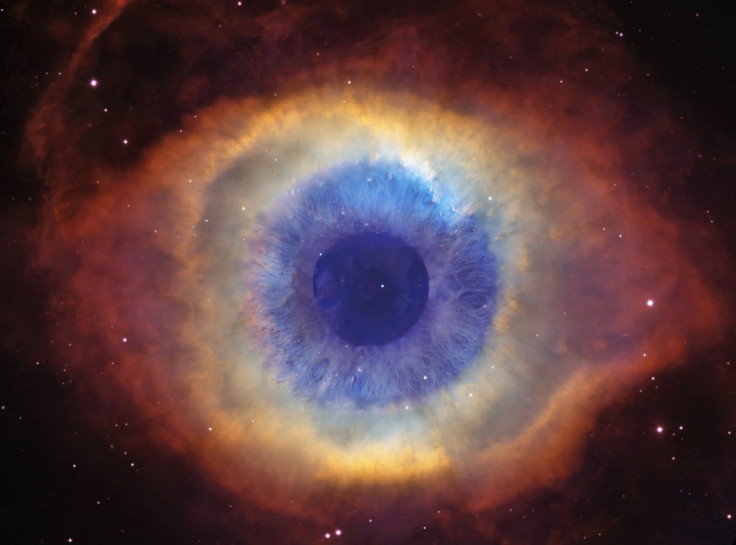How Far Can The Eye See? The Answer May Be In The Stars (Seriously)

The human eye has mystified philosophers, scientists, and physicians since antiquity. They suggested explanations of how the eye worked that ranged from shooting out beams of light (thanks, Plato) to a crystal lens that instrumented our vision. The suggestions and research grew more sophisticated — and more accurate — until we reached the present day, where it’s safe to say we have a fairly solid understanding of the mechanisms that allow human sight.
One aspect of sight that has evaded our understanding, however, is a surprisingly straightforward question: How far can the human eye see? Our ignorance isn’t for a lack of trying — we’ve been conducting experiments and calculations for a long time, coming up with some well-respected theories. A single candle flame has become the marker by which many have attempted to measure the power of our eyes. Can we see a single flame a few hundred meters away, or a few miles? A definite answer evades us. We still can’t say for sure how far we can see, but some new research may have just gotten us a lot closer to finding out.
Why Is Measuring Human Sight So Difficult?
One would think figuring out how far we can see a candle flame would be relatively easy to discover, but there are a few seemingly impenetrable issues. First, the practicality of finding a flat, clear, obstruction-free expanse to test our vision is all but impossible. Trees and structures would be out of the question, as they would block our line of vision. Even harder to control for are other light sources — anything that could interfere with our receptiveness or distract us compromises the legitimacy of the experiment.
Even if scientists were somehow able to find this mythical, distraction-free plot of land, the Earth itself presents another problem. The planet we live on is round (breaking news), and therefore curves off at a point in the distance we call the horizon, at about 5 kilometers away. Our eye might be able to see a candle flame beyond this distance, but there isn’t any way to find out, barring doing the experiment in outer space.
These two problems are problematic on their own but have been insurmountable together. Scientists, therefore, have had to resort to comparing, extrapolating, and calculating. Though it isn’t the simple flame/distance experiment, a study from Texas A&M University has offered up quite an insightful way to estimate the limits of our vision.
An Answer In The Stars
Two astronomers, Kevin Krisciunas and Don Carona, recently decided to look at how humans view stars, shedding some light — pun intended — on the way we see things on Earth.
The brightness of stars is measured on a magnitude scale. Weirdly, stars with a magnitude 0 are the brightest, and they get dimmer and dimmer the higher the magnitude. The faintest stars humans can see have a magnitude of 6, and any stars dimmer must be viewed through a telescope or binoculars. Knowing this, the researchers decided to calculate the distance at which a single candle flame would have a magnitude of 0, like the bright star Vega.
Their most basic nighttime experiments with a candle suggested that this distance was 338 meters, a distance at which they wrote “the candle flame and Vega appeared of comparable brightness,” to their eyes. To check more accurately, they observed the two light sources with an astronomical camera. The results surprised them.
“The candle flame at 338 m was 2,423 magnitudes brighter than Vega, even though they looked comparable in brightness to our eyes,” they wrote.
After making some adjustions, Krisciunas and Carona said that parity would occur at 892 meters — basically, the candle flame is the same brightness as a magnitude 0 star at this distance.
We know that magnitude 0 stars are 251.2 times brighter than magnitude 6 stars, the dimmest ones humans can see unaided. This would make it possible to determine how far the candle should be to appear equally bright as a magnitude 6 star.
According to the researchers, this would occur at a distance of 2,576 meters, or about 1.6 miles. It would seem our wondering is done — the farthest distance a human eye can detect a flame is 1.6 miles.
Unfortunately, as well thought out as this work is, it is unlikely to settle discussions on the issue. Other work has suggested the human eye can see flashes of light consisting of just a handful of photons, and there are certain differences between starlight and candlelight that many could argue cannot be calculated for.
We’re still in need of that definitive experiment that really measures the issue at hand — the maximum distance at which a human can see a candle. Calculating the distance based on other measurements, as this and other experiments have done, is a useful tool, but one that cannot be substituted for the question itself.
Source: Krisciunas K, Carona D. At What Distance Can The Human Eye Detect A Candle Flame? Texas A&M University Department of Physics and Astronomy. 2015.
Published by Medicaldaily.com



























